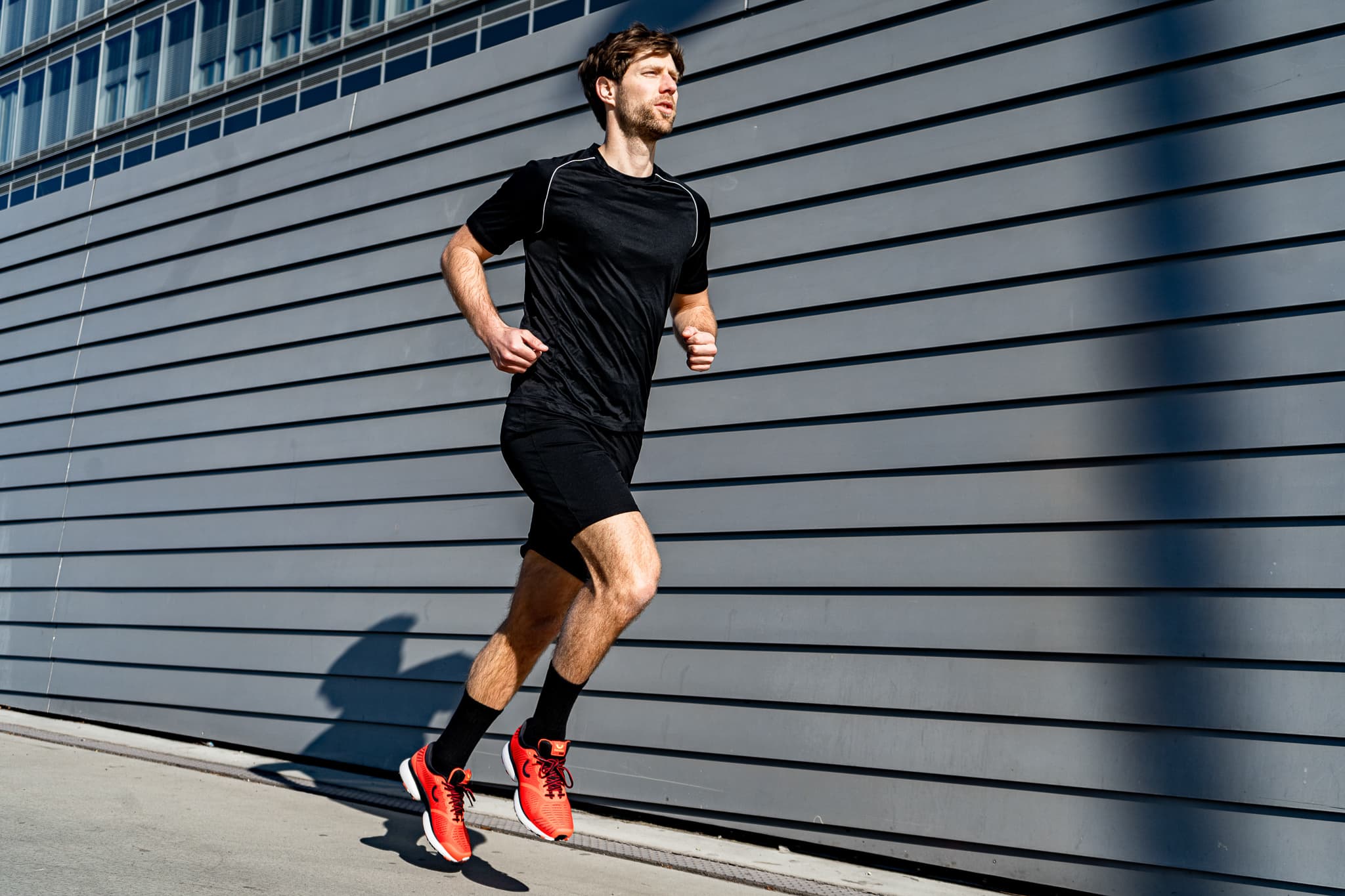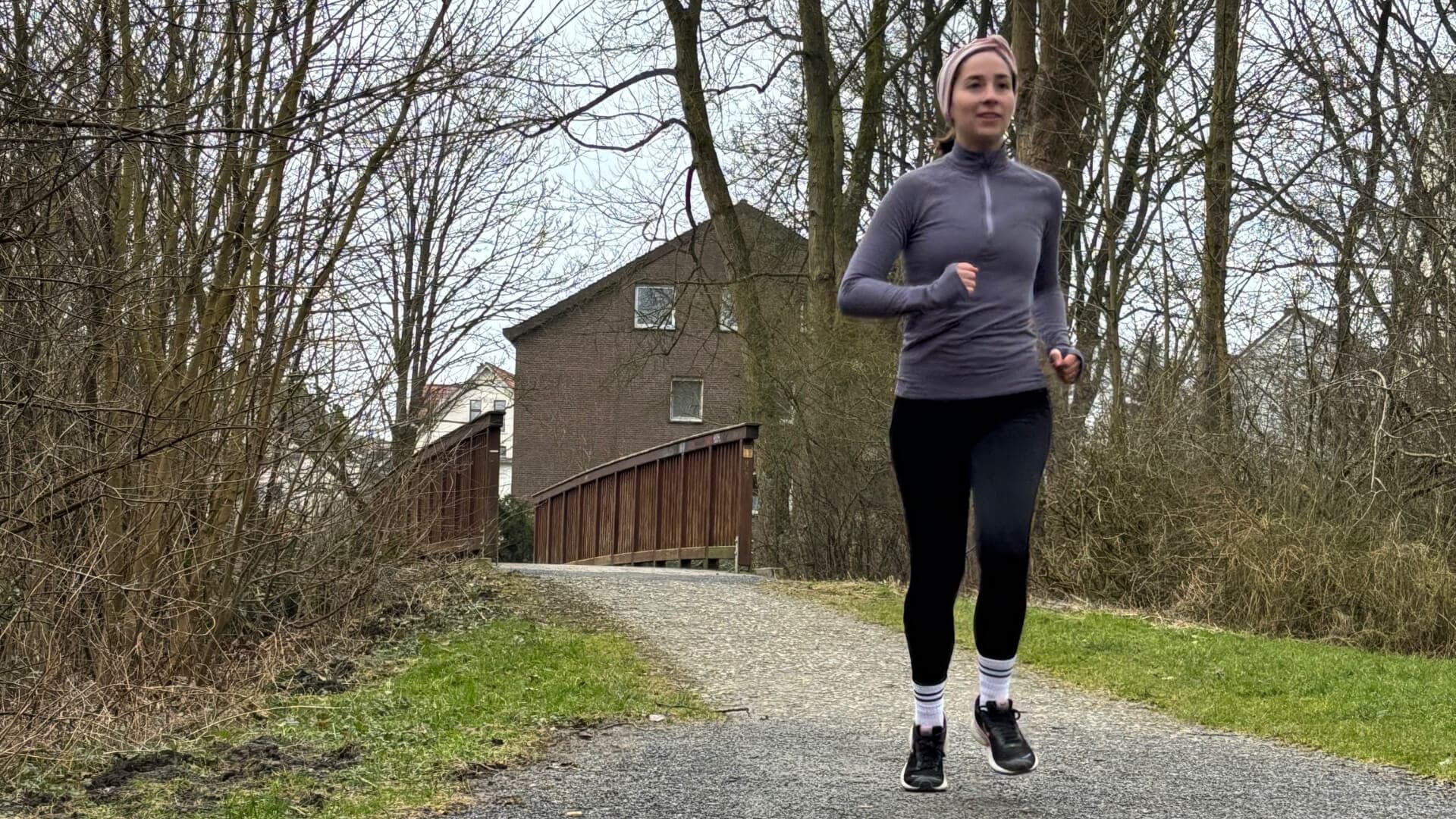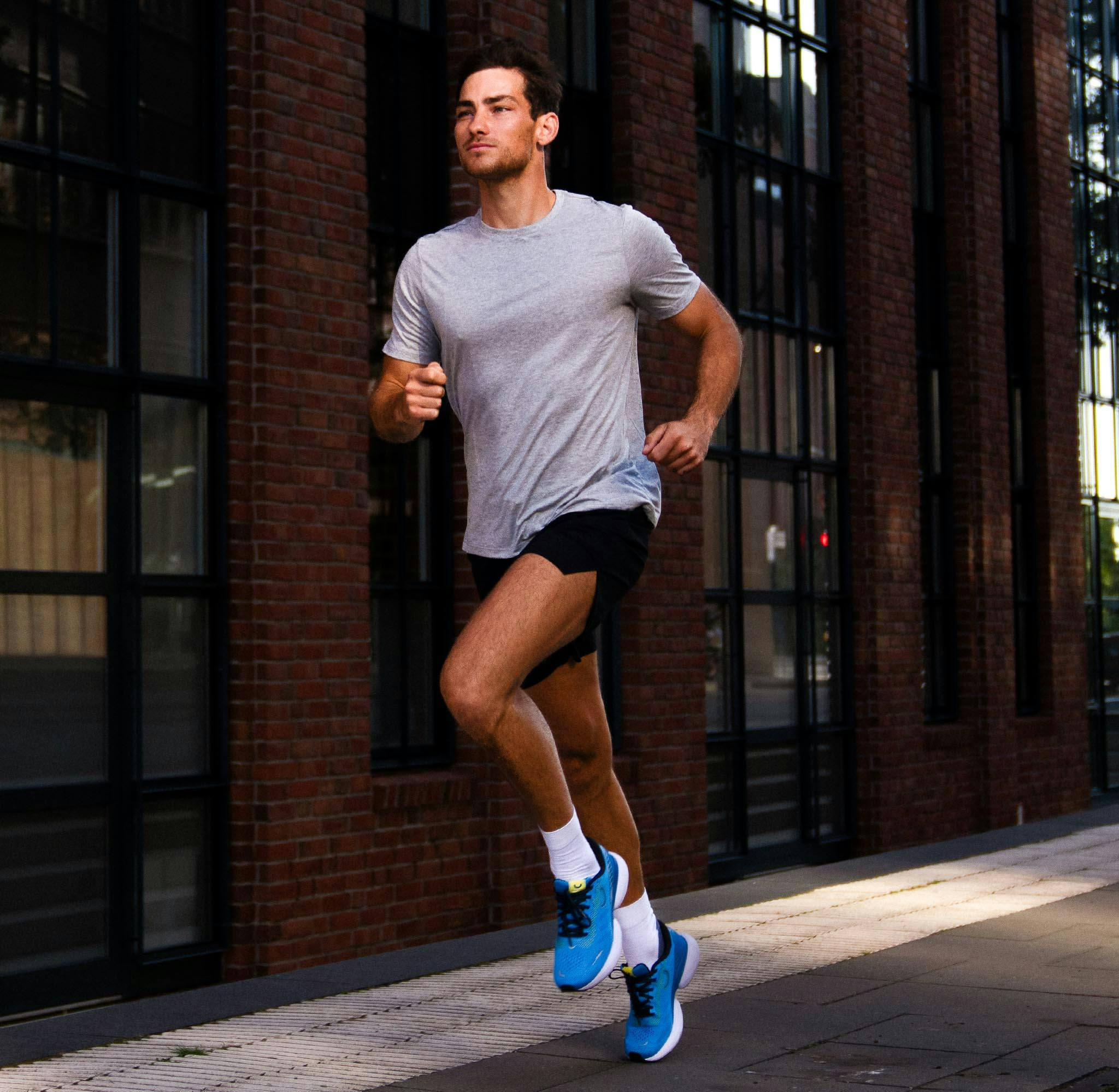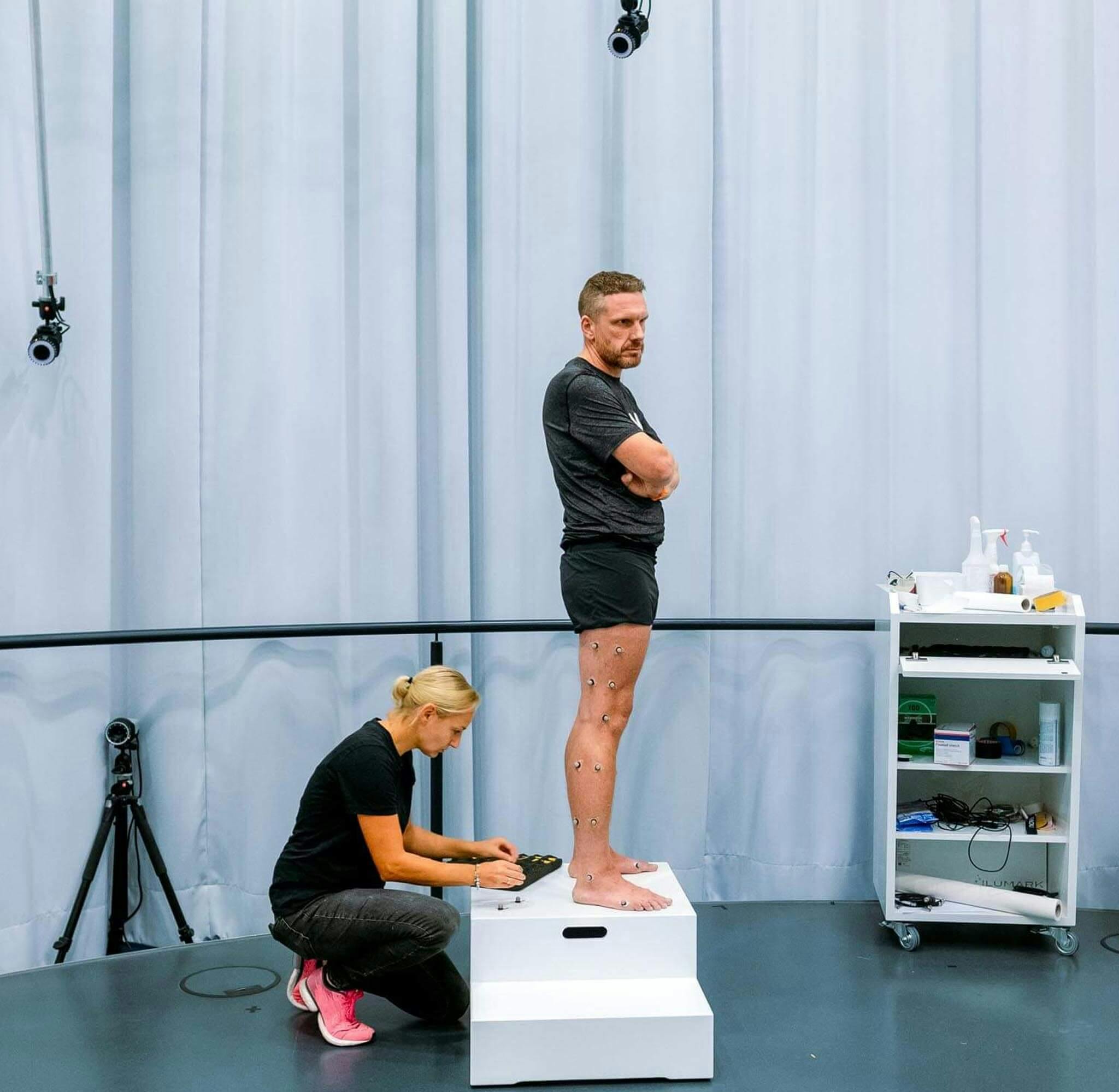
Breathe Properly While Running: Take a Deep Breath, Please
24th September 2021
Breathing – a common feature that connects us all, and yet 80% of people do not breathe correctly. We explain how important breathing is when running and how you can avoid getting annoying side stitches in the future. On your marks, get set, take a breath; here are our tips for runners.
Content:
There’s still room for improvement: exhale and start running
Breathing too short? The two ways to breathe
Breathing correctly while running
How to get rid of side stitches
Running in winter: our body should breathe warm air
“Take a deep breath, please.” What sounds so simple, is not easy for many people. Studies show that large proportion of people do not breathe “correctly”. But what does that actually mean – not breathing “correctly”? After all, we breathe all day long – whether we are awake or asleep. This is an automated process of our nervous system ensuring that there is enough oxygen in our blood – so that all vital organs are supplied.
There’s still room for improvement: exhale and start running
We’ve just run five kilometers – and we’re already gasping for air. But why is that? We are well-trained runners after all. It can’t be a lack of stamina.
Instead, it’s something else entirely – our breathing. Because this is a decisive factor for our performance. How you breathe is crucial. But how do we actually breathe properly while running to get the best possible results?
The answer, it seems, is quite simple. We just need to use the full capacity of our lungs. Because one thing is certain; the more oxygen we breathe in, the better our body performs – and the better we can run.
But what does this actually mean for running?
Runners should take slow, deep breaths in and out while they run. Because it is precisely the so-called abdominal breathing that helps to release the full potential of our lungs. By the way, we can easily test whether we are already breathing through our belly during our next run. To do this, we place the flat of our hand on our stomach. If you breathe in and your hand moves away from you, you are breathing into your belly. Perfect.

The important thing here is that in the best case, we breathe in through both the nose and the mouth. If you only breathe in through your nose, you don’t pump enough oxygen into your body. We then exhale only through the mouth. This allows us to expel air in a targeted manner so that we can breathe in again more quickly. This is particularly important when we increase our training intensity.
Proper breathing while running is crucial. After all, the right breathing technique leads to an increased lung volume in the long term and to more fitness overall. This is not only important for our next run, but also for our health. When running, runners should not adjust their breathing to their running pace. After all, the right breathing rhythm sets in all by itself.
Breathing too short? The two ways to breathe
Simply put, there are two ways to breathe: shallow, too-short breathing or deep breathing. It is logical to recommend the latter. But in everyday life this is sometimes not so easy. Because we don’t breathe consciously, we usually just breathe without thinking. The result is that we breathe shallowly and too short.
But breathing too short is not only problematic when running. Shallow breathing can also have unpleasant consequences in everyday life. The triggers here are usually stress and frequent pressure to perform. They increase activity in the so-called sympathetic nervous system, a part of the human nervous system. However, we can counteract this. And that is important. If we breathe incorrectly, we feel fatigued and tired due to the lack of oxygen and have headaches or concentration problems. The wrong breathing technique therefore affects our health. It is obvious that we are not able to reach our full potential when running.
DISCOVER RUNNING SHOES
FROM TRUE MOTION
That is why it makes sense to breathe consciously when we start running. Correct breathing needs training. In order for us to use our full lung capacity, it helps to breathe into the abdomen as we do when running; this is called diaphragmatic breathing. This breathing technique fills the entire lung with oxygen.
Breathing correctly while running
Let’s get back to running. Runners often wonder how to breathe properly while running to increase distance or not get out of breath too quickly. The problem is that there is no simple answer beyond belly breathing. That’s because every body is different – and different runners come with different preconditions.
For example, on slow runs, it helps some to breathe in after four strides and out after the next four. On faster runs, for example, they breathe in and out every two steps. However, the correct breathing rhythm is usually established all by itself.
Breathing technique training: there are no generalized tips
Nevertheless, if runners try to consciously improve their breathing technique in everyday life, this will help them to automatically breathe correctly when running. This is important because only then do we have enough oxygen in our blood to be able to perform during sports. This also has a positive effect on our health.
Time and time again, it is said that breathing through the nose alone gives you wings when running. But in order to satisfy the increased oxygen demand of our cardiovascular system and our muscles, runners need their entire lung capacity. They fill them in the best possible way when they use not only their nose but also their mouth to breathe in – no matter how many steps we take or how fast we run.
To make it easier to breathe deeply into the abdomen while running, it is also important to wear the right clothes. They should not fit too snugly during sports – and should not prevent runners from breathing into their stomachs.
How to get rid of side stitches
Scientists are not entirely in agreement about how and why side stitches occur. However, there are many indications that they are caused by an incorrect breathing technique. In other words, they are triggered by irregular breathing which in turn results in insufficient oxygen supply to the diaphragm.
The tricky thing is that sometimes we get the stitches even when we are aware of our breathing while running. Whenever that’s the case, we feel this stabbing pain behind our ribs. The side stitch is so uncomfortable that we stop running, stop breathing fluidly, and gasp for air all the more erratically. A vicious circle.
But this is exactly what runners can break out of. The best thing to do is to slow down our running speed first. We start to pay attention again, to breathe consciously into our belly. This supplies our diaphragm with more oxygen. We recover.

To relax our diaphragm even further, it helps to stretch. To do this, we raise our arms above our heads. We breathe in deeply and out again – and stretch our upper body. This releases any tension. Some runners also find it helpful to press on the stitching area and release the pressure when they exhale.
However, side stitching does not occur only when our breathing is irregular. A full stomach or weak core muscles can also trigger side stitching while running. Two hours before our running session, we should therefore eat light, low-fiber, and low-fat foods.
It is also important to warm up properly before running. If we accelerate from zero to five steps per second while running, this overly strains our muscles – and thus also our breathing. We should therefore always prepare ourselves optimally for a run and already pay attention to the correct breathing technique.
Running in winter: our body should breathe warm air
A run in winter catapults our thoughts to the Alps. But time and again we notice that breathing is difficult when running in winter. The lungs burn and sting. So what are the tips when we go running in zero degrees?
One thing is certain: cold days are not ideal for exercising in fresh air. A study by St. Mary’s University shows that the human body works most efficiently at about ten degrees. “We need about 50% of our energy to regulate the temperature of our body,” explains Gert-Peter Brüggemann, professor of biomechanics and co-founder of True Motion. “That’s precisely why an outside temperature between 10 and 15 degrees is ideal for most runners.” However, there’s no need to fear cold winters; up to a temperature of about minus ten degrees, outdoor sports are uncritical. This makes it all the more important that we warm up properly.
"An outside temperature between 10 and 15 degrees is ideal for most runners."
While in the summer the body sweats more when running to cool itself down, it doesn’t do that in the winter. Instead, it has to warm it. This puts extra strain on the cardiovascular system.
Runners should therefore run more slowly than usual in winter. When the workload increases, we breathe faster. As a result, we pump more cold air into our lungs faster. However, fast breathing prevents the cold air from warming up in our mouths before it penetrates deeper into our bodies. This is not only uncomfortable, but also triggers a coughing fit. In the worst case, cold air even causes respiratory infections. Therefore, we should slowly approach our optimal individual pace.
To additionally protect the lungs from the cold air, a thin scarf or a cloth in front of the mouth and nose can help. They slow down the air flow – and thus prevent cold air from getting into our lungs too quickly.
So how we breathe while running affects our running performance. The right tips and breathing techniques help to increase it. That’s why it is important to take a deep, conscious breath.

NEVER RUN OUT OF
NEWS
Discover all True Motion stories – and be the first to hear about new products, promotions and events. Simply, center your run!

NEVER RUN OUT OF
NEWS
Discover all True Motion stories – and be the first to hear about new products, promotions and events. Simply, center your run!
READ THE NEWEST
U-RUN STORIES
Sabrina Mockenhaupt: This shoe got me running again
2025-10-31

Sabrina Mockenhaupt has achieved everything that many runners dream of. Running was and is her life, until the pain eventually became too much. Today, she is running pain-free again – this is her story.
Laura Schmidt: I have rediscovered running for myself
2025-03-07

My name is Laura. I started running eight years ago – to clear my head after work. But knee pain kept me from being able to run regularly. A new pair of running shoes was finally the solution. Today I run pain-free. This is my true runner story.
READ THE NEWEST
U-RUN STORIES
Sabrina Mockenhaupt: This shoe got me running again
2025-10-31

Sabrina Mockenhaupt has achieved everything that many runners dream of. Running was and is her life, until the pain eventually became too much. Today, she is running pain-free again – this is her story.
Laura Schmidt: I have rediscovered running for myself
2025-03-07

My name is Laura. I started running eight years ago – to clear my head after work. But knee pain kept me from being able to run regularly. A new pair of running shoes was finally the solution. Today I run pain-free. This is my true runner story.
RECOMMENDED BY








RECOMMENDED BY








GET 10 % OFF YOUR FIRST ORDER!
Get your personal running updates with exclusive discounts, product news, training plans and tips for healthy running - straight to your inbox. 10% discount on your next order.
SERVICE
ABOUT US
© 2025 True Motion Running GmbH

















